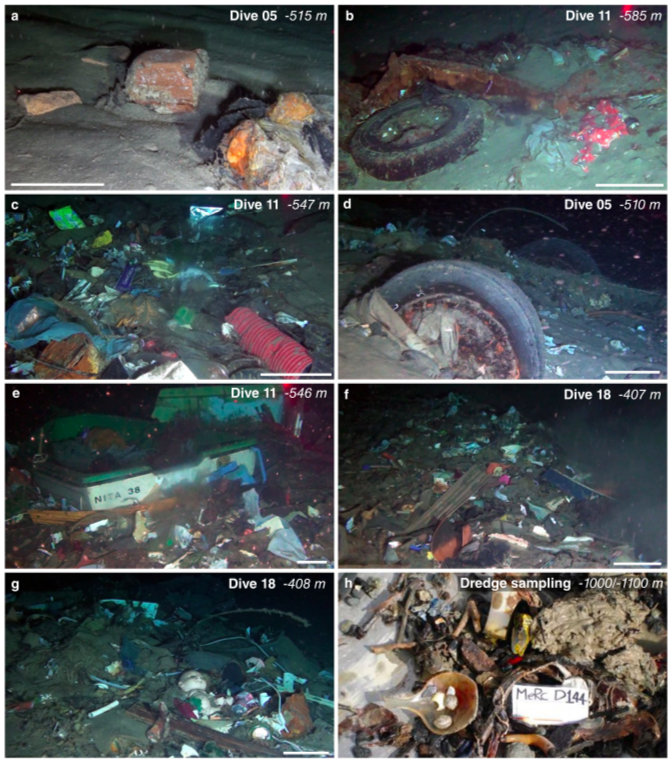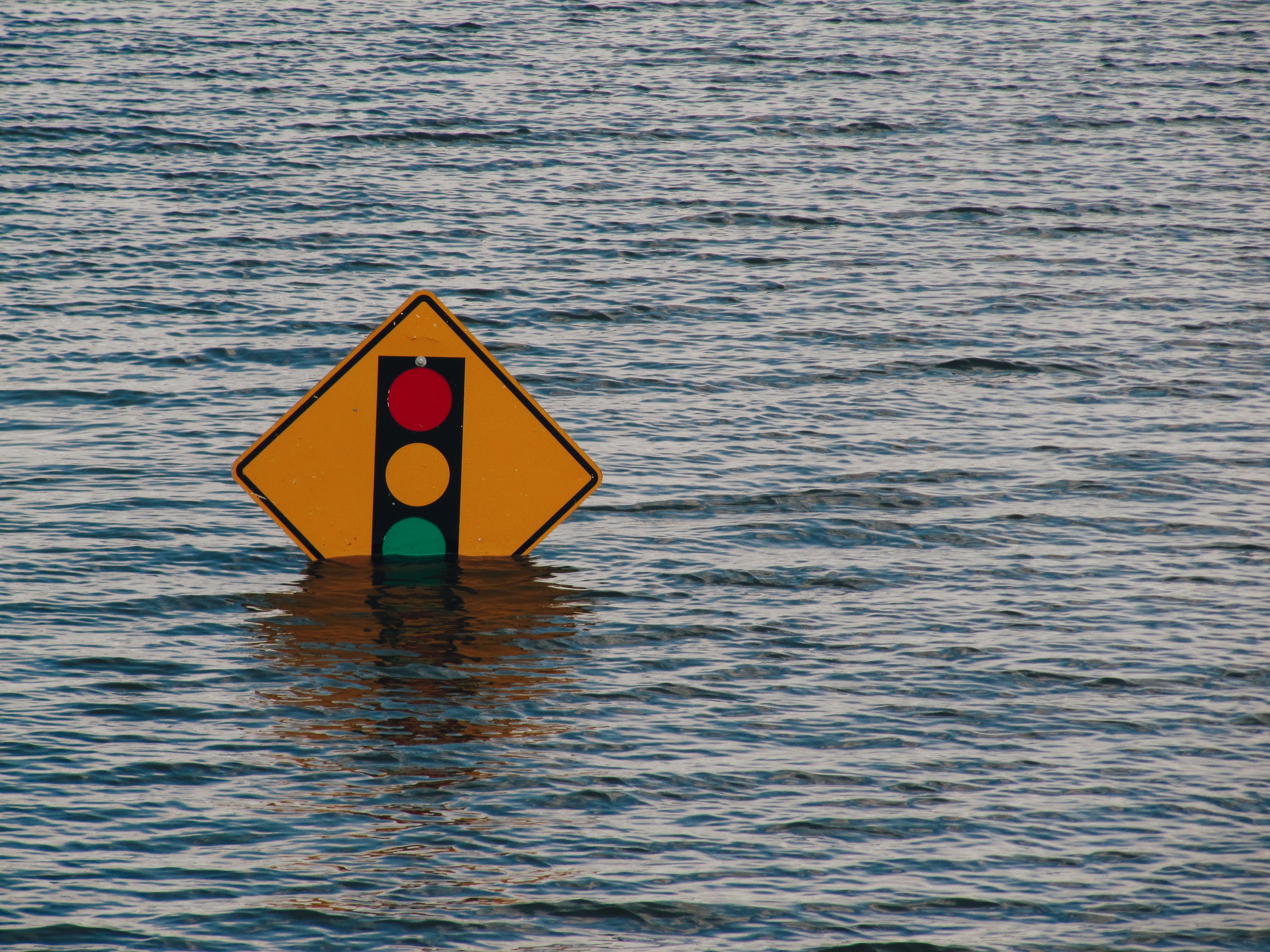Pierdomenico, M., Casalbore, D., & Chiocci, F. L. (2019). Massive benthic litter funneled to deep sea by flash-flood generated hyperpycnal flows. Scientific Reports, 9(1), 5330. doi:10.1038/s41598-019-41816-8
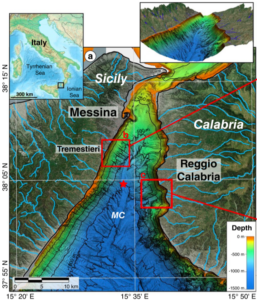
We’ve all seen it: discarded items by the sides of roadways, dry rotted tires on riverbanks, and junk piles wasting away in backyards or abandoned lots. We humans generate a lot of waste, and while we’re striving to reduce, reuse, and recycle, there are plenty of items that fall out of circulation and enter the environment. That flip-flop you lost at the beach? The full garbage bag that escaped the confines of a truck-bed miles before the exit for the dump? Chances are, those things will make their way to a larger body of water. For coastal regions with high population densities, that larger body of water is typically the ocean.
Marine debris is far-reaching, having been found in nearly every marine environment, from shallow bays to the darkest abyssal plain. Thanks to a study by Martina Pierdomenico and her colleagues at the Institute of Environmental Geology and Geo-Engineering and the University of Rome in Italy, we’re getting a better glimpse at how fast some of this underwater garbage is collecting. The bad news? In some places, it’s happening at rates we’ve severely underestimated.
Specifically, Pierdomenico’s team focused on coastal regions along the Strait of Messina in the central Mediterranean Sea (see Fig. 1). The Mediterranean Sea is already a prime location for increased litter accumulation, in part due to its restricted water flow through the Strait of Gibraltar and the high volume of trade and human activity throughout its waters. While the entire Mediterranean may have limited water exchange, the Strait of Messina has a long history of unique and extreme water flows, including whirlpools that may have inspired the monsters, Scylla and Charybdis, in Homer’s Odyssey. Provided one has access to a submarine or ROV (remote operated underwater vehicle), an underwater sequence of submarine canyons can be explored as they line the mountainous shores, carving away from the mouths of the steep streams that empty into the Mediterranean basin. Within and along those valleys were where Pierdomenico’s team began counting and cataloguing marine municipal solid waste (MMSW).
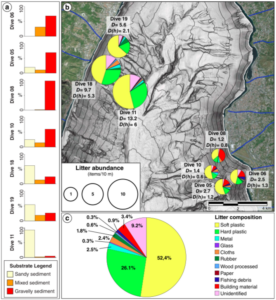
Over seven ROV dives, the team documented the amount and type of waste they were seeing, and assessed the geology of the landscape, since sediment type plays a large role in erosion and underwater landslides. The seven dives totaled a distance of 6,420 m (~4 miles) and the MMSW totaled over 4,000 pieces! (Fig. 2) The vast majority of waste was made of soft and hard plastics (52.4% and 26.1%, respectively)—hardly unexpected given how much plastic plays a part in modern life. But there were also larger debris items, like building materials, broken furniture—even a partially buried car! Also, while the amount of debris was reported as an average over the total dive distance (e.g. 5 pieces/10 m), in reality the crew wasn’t seeing uniform or equal dispersal. Litter appeared in greater numbers in deeper sections along the dive route, and in places where the slope of ground flattened out. While some lone items were scattered along the bottom, Pierdomenico’s team began also noted “litter mounds” along specific dive paths that would loom out of the darkness, consisting of hundreds of items.
Marine debris has been reported before in submarine canyons, but when researchers translated their MMSW numbers to an estimated number/km2, they found their values were triple that of any results previously reported. While lighter debris could have easily come in from farther distances, the presence of bigger/heavier items (e.g. building materials, cars, boats) means there is a mechanism transporting large quantities of MMSW into the depths. The answer lies in the seasonal changes in the region, along with the kinds of sediment along each submarine canyon.
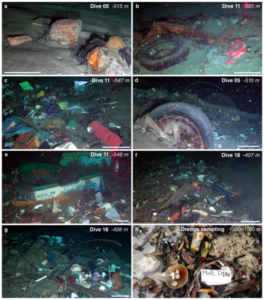
Many of the rivers and steep streams lining the Strait only carry water intermittently throughout the year; heavy rains bring floodwaters pouring out of the mountainous regions in a seasonal cycle. Lack of strict waste removal regulations in the area has also allowed the use of dry riverbeds as dumping sites. As a result, huge amounts of litter get caught up in the torrents and are swept out to sea. The density of the debris mixed with the water and sediment rushing towards the ocean makes what is called a hyperpycnal flow—this flow is more dense than the water it is flowing into, which means it immediately sinks. This makes for rapid transport of debris into the depths. Additionally, if the sediment type of the submarine canyon is finer or less stable, this massive influx of dense water and debris can cause seafloor erosion and slope failures, leading to underwater landslides that move tons of debris further into the canyons.
Given how unique this location is, it’s possible the Strait of Messina is an anomaly—a litter hotspot, if you will. But just because it is a hotspot, does not mean it can’t impact larger areas as litter accumulates. Pierdomenico and her colleagues recognize a large policy shift is in order, but in the meantime there are measures we can all take on our own to limit the amount of garbage entering the ocean. Just like with surface marine debris and microplastics, this debris may be out of sight, but can’t be out of mind. So remember, every little bit helps!
I am a former PhD student from the University of Rhode Island, having discovered my love of teaching and informal science education in part through OceanBites! Since departing academia, I’ve focused on creating educational content for visitors at the New England Aquarium, Chincoteague Bay Field Station, and now the National Aquarium. I’ve also dabbled in co-creating a comedy/brainstorming podcast, ThunkTink, and enjoy getting lost in nature with my dogs.

